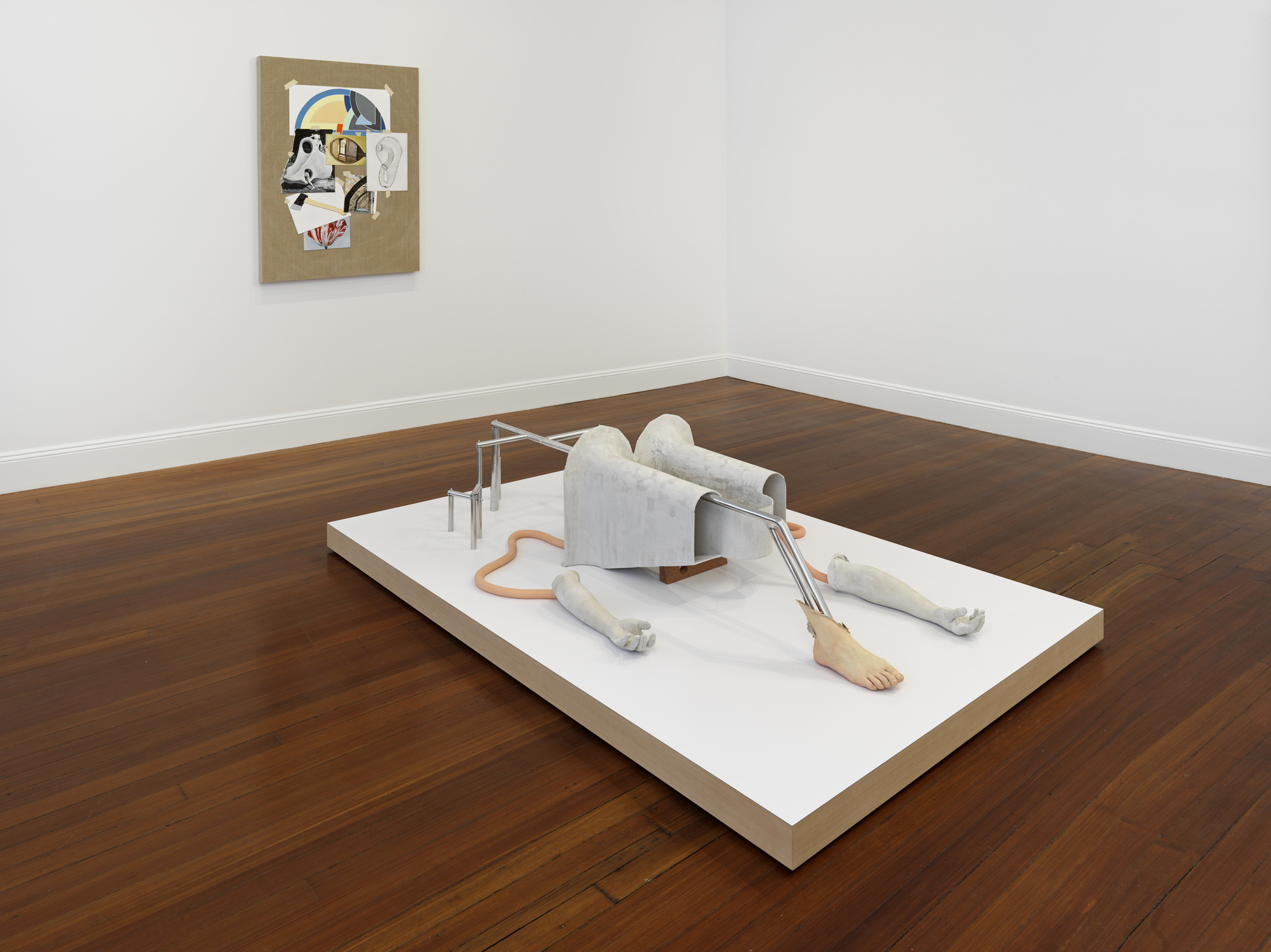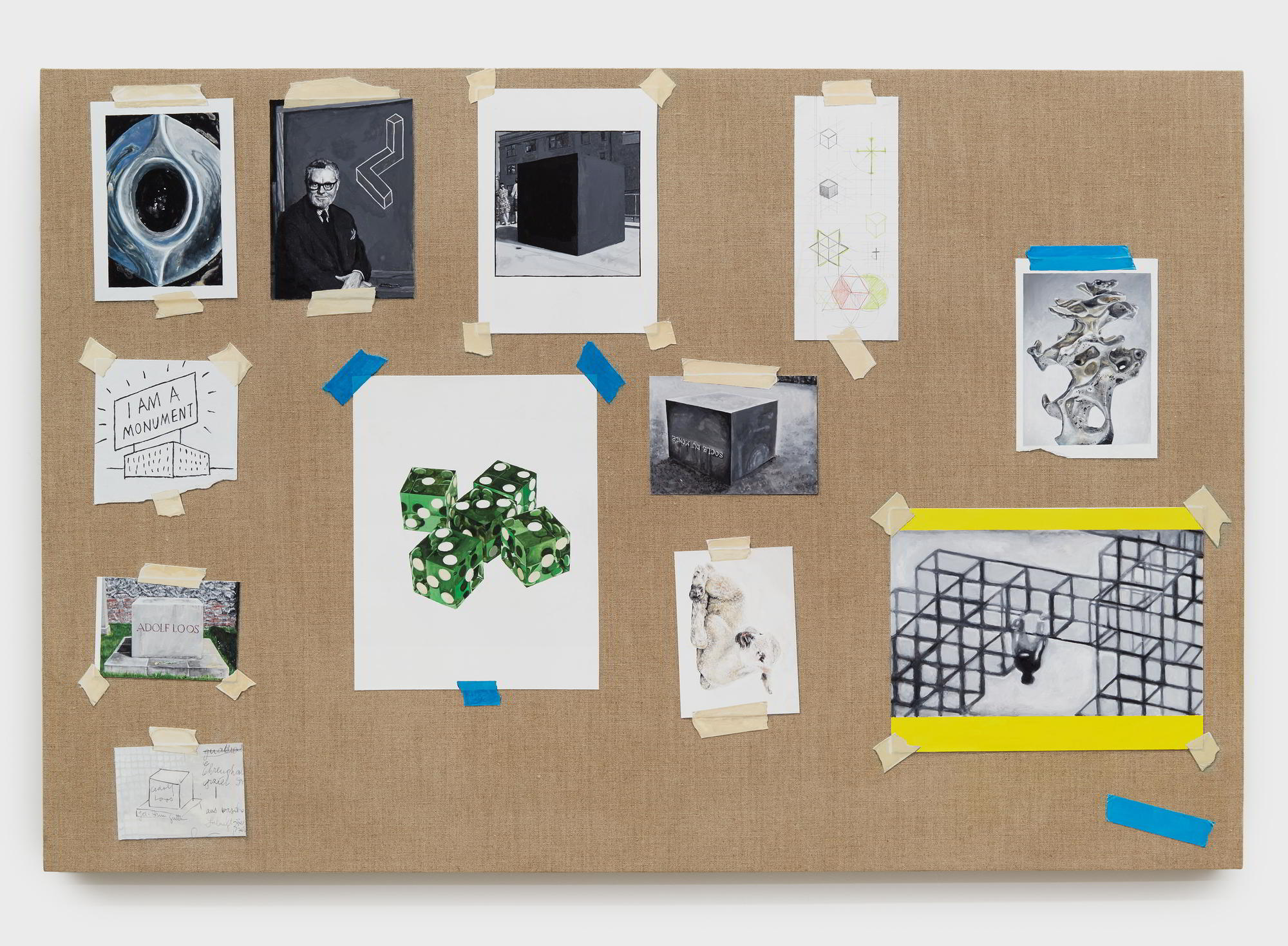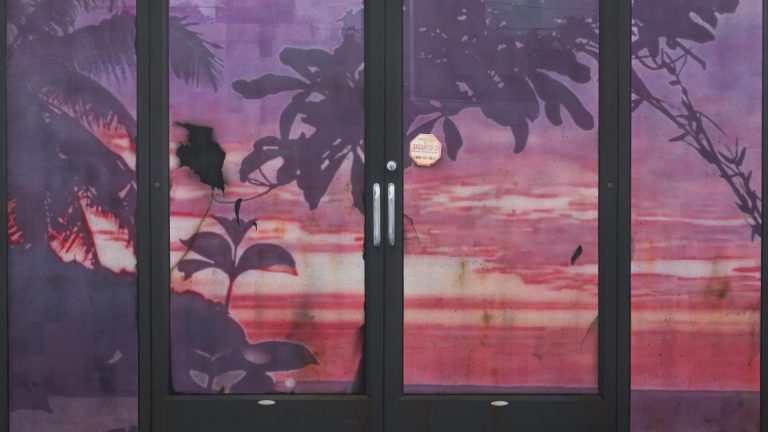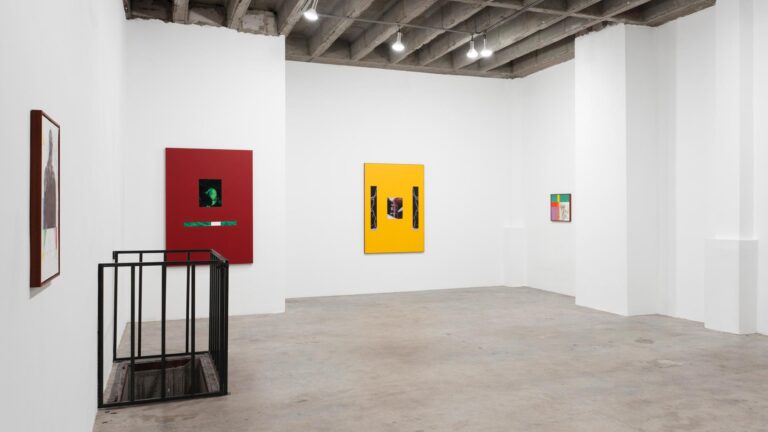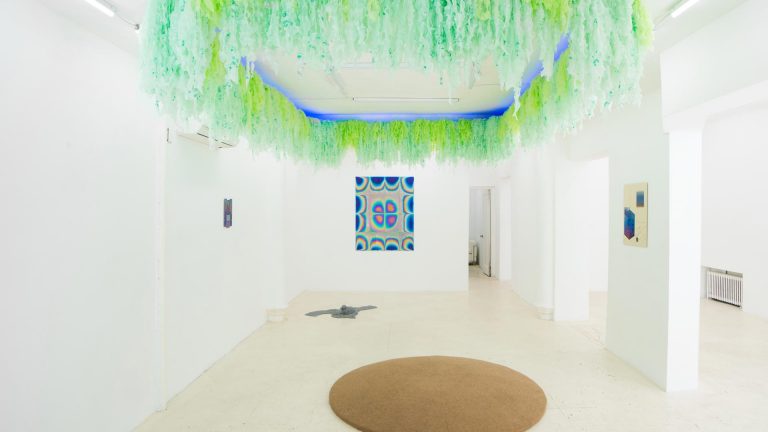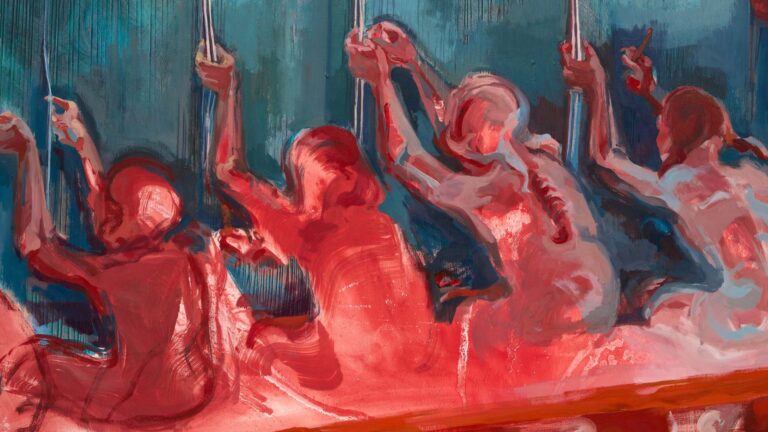Artist: Julian Hoeber
Exhibition title: Research & Personal Development
Venue: Blum & Poe, New York, US
Date: January 18 – February 24, 2018
Photography: © Julian Hoeber, Courtesy of the artist and Blum & Poe, Los Angeles/New York/Tokyo
Blum & Poe is pleased to present Research & Personal Development, Julian Hoeber’s seventh solo exhibition with the gallery, and his first presentation at Blum & Poe, New York.
For Hoeber, many of the binary categories used to define art, culture, and social relations are non-functional or imperfect. Rather than operating as polarities, categories such as interior and exterior, psychic and somatic, rational and irrational, are able to occupy the same space in his work. With Hoeber’s earlier series Execution Changes, the artist rendered a rigorous mathematical system with loose and expressive execution, conveying that these modes of working are not at odds, but complementary aspects of a greater whole. Hoeber harnesses rigor and exactitude in service of the emotional and idiosyncratic, revealing that his conceptual strategies and modes of inquiry are subjective and poetic.
In this exhibition Hoeber continues with his sprawling project Going Nowhere, a years-long endeavor to design an architectural structure in the shape of the artist’s thinking. The extensive research accumulated in making Going Nowhere is the subject matter for a series of meticulously painted trompe l’oeil canvases. Rendered groupings of the artist’s trove of collected images relay poetic relationships between form and the ineffable. One painting depicts a rough history of 4,000 years of scientific and theoretical attempts to describe the shape of the mind or consciousness. These range from ancient religious symbols to contemporary neuroscientific mapping. Hoeber uses the optically confounding aspects of trompe l’oeil to reveal the visual splendor of his source material, complicating our usual assumptions about what is real and what is unreal, and what is beautiful and what is informational.
The subjective quality of this project compelled Hoeber to ask, “How did I come to be who I am (as a person, as an artist)?” and “How did we come to understand the meaning of forms as we do?” The work in the exhibition is autobiographical and expressive, as well as historically referential. This combination is most poignant in a series of sculptures built in response to Hoeber’s childhood dollhouse that was made for him by his babysitter Alexandra Tyng, the daughter of architects Anne Tyng and Louis I. Kahn. Hoeber imagines the idea of the “house” as a transitional object that moves from the site of development and attachment (the dollhouse) through several morphological stages. Here it progresses from the dollhouse’s treehouse structure to Kahn-like Brutalism, to organic modernist forms, and eventually to a fragment of the Going Nowhere building.
Other sculptural works in the exhibition use components of the Going Nowhere building in larger anthropomorphic sculptures. In Twin Hallways Going Nowhere with Arm, Leg, Foot, a partial architectural model that confuses interior and exterior spaces becomes the midsection of a figure that is equal parts cartoon, machine and flesh. Another work, Self-Portrait as Crown
Molding, frames the ceiling of one gallery and looks down upon these sibling sculptures, mimicking the shape of Hoeber’s own facial profile. These ontological concepts and self-reflexive compositions culminate at the intersection of Hoeber’s complex practice, his technical painterly skills, and an ongoing introspective pursuit of the nature of the mind.
Julian Hoeber (b. 1974, Philadelphia, PA) has a BA in Art History from Tufts University, a BFA from the School of the Museum of Fine Arts, Boston, and an MFA from Art Center College of Design, Pasadena. His work is featured in public and private collections internationally including Dallas Museum of Art; Deste Foundation Centre for Contemporary Art, Athens; Hammer Museum, Los Angeles; Museum of Contemporary Art, Los Angeles; Museum of Modern Art, New York; Nasher Sculpture Center, Dallas; Rosenblum Collection, Paris; Rubell Family Collection, Miami; Frances Young Tang Teaching Museum and Art Gallery, Skidmore College, Saratoga Springs, NY; and the Western Bridge Museum, Seattle.
Julian Hoeber, Research & Personal Development, 2018, exhibition view, Blum & Poe, New York, © Julian Hoeber, Courtesy of the artist and Blum & Poe, Los Angeles/New York/Tokyo
Photo: Cooper Dodds
Julian Hoeber, Research & Personal Development, 2018, exhibition view, Blum & Poe, New York, © Julian Hoeber, Courtesy of the artist and Blum & Poe, Los Angeles/New York/Tokyo
Photo: Cooper Dodds
Julian Hoeber, Research & Personal Development, 2018, exhibition view, Blum & Poe, New York, © Julian Hoeber, Courtesy of the artist and Blum & Poe, Los Angeles/New York/Tokyo
Photo: Cooper Dodds
Julian Hoeber, Research & Personal Development, 2018, exhibition view, Blum & Poe, New York, © Julian Hoeber, Courtesy of the artist and Blum & Poe, Los Angeles/New York/Tokyo
Photo: Cooper Dodds
Julian Hoeber, Research & Personal Development, 2018, exhibition view, Blum & Poe, New York, © Julian Hoeber, Courtesy of the artist and Blum & Poe, Los Angeles/New York/Tokyo
Photo: Cooper Dodds
Julian Hoeber, Research & Personal Development, 2018, exhibition view, Blum & Poe, New York, © Julian Hoeber, Courtesy of the artist and Blum & Poe, Los Angeles/New York/Tokyo
Photo: Cooper Dodds
Julian Hoeber, Three Hex Column (Transitional Object), 2017, Sculpture: Ultracal, fiberglass, acrylic and flashe paint, Pedestal: Powder-coated steel and glass, Sculpture: 22 x 22 x 22 inches, Pedestal: 27 1/4 x 28 x 28 inches, Photo: Cooper Dodds
Julian Hoeber, Permeable Tension Figure Model, 2016-2017, Sculpture: Pigmented ultracal, fiberglass, lacquer, hardware, glass eye and patina, Pedestal: Oriented strand board, pigmented exposed aggregate concrete, lacquer and hardware, 45 x 57 x 24 1/2 inches overall, Photo: Cooper Dodds
Julian Hoeber, Going Nowhere Transitional Hallway Model and Column with Arm, 2017, Sculpture: Ultracal and fiberglass, Pedestal: Powder-coated steel and glass, Sculpture: 15 1/2 x 33 1/2 x, 25 1/2 inches, Pedestal: 36 1/4 x 40 x 28 inches, Photo: Cooper Dodds
Julian Hoeber, Brutalist Dollhouse (Transitional Object), 2017, Sculpture: Ultracal and epoxy, Pedestal: Powder-coated steel and glass, Sculpture: 23 3/4 x 29 x 27 inches, Pedestal: 30 x 32 x 28 inches, Photo: Cooper Dodds
Julian Hoeber, The Mysteries of Cubes and the Wonder of Soft Forms, 2014-2017, Gouache, graphite, acrylic, colored pencil, and modeling paste on linen, 28 x 42 inches, Photo: Heather Rasmussen
Julian Hoeber, The Appearance of Geometry in Nature as a Root of Technology, 2014-2017, Gouache, graphite, acrylic, colored pencil, and modeling paste on linen, 28 x 42 inches, Photo: Heather Rasmussen
Julian Hoeber, Untitled object (dollhouse) by Alexandra Tyng, 1980-2015, Sculpture: Mixed media (including plaster bandage, acrylic paint, tree bark, plywood, foamcore, shells, pebbles, etc.), Pedestal: Powder-coated steel and glass, Sculpture: 22 x 26 x 23 1/4 inches, Pedestal: 33 x 32 x 28 inches, Photo: Cooper Dodds



